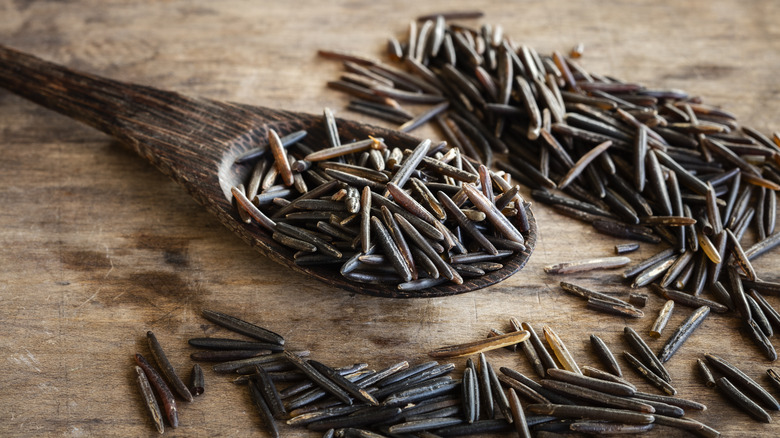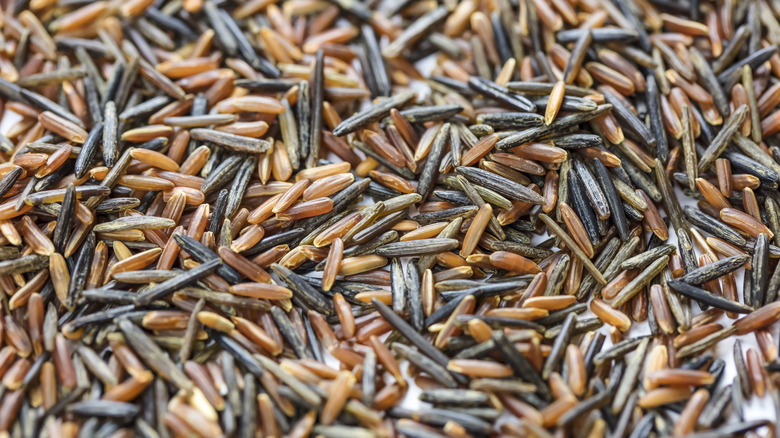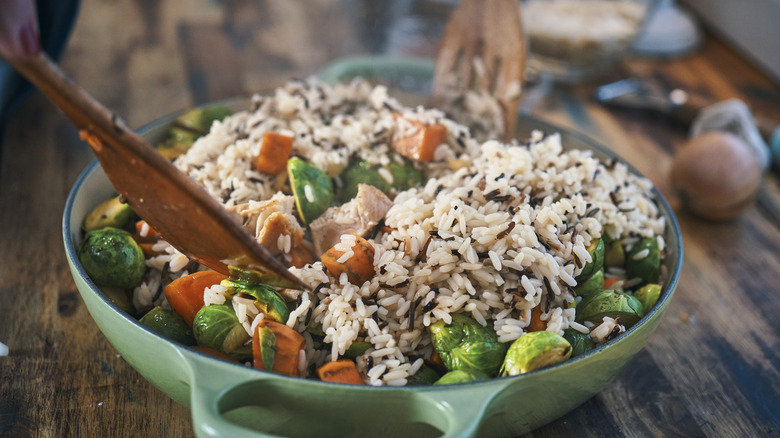Is Wild Rice Actually Rice?
It looks like rice, it feels like rice, and it even cooks like rice, but is it truly rice? Turns out, it is not: Wild rice isn't actually rice. In reality, it is the grain of an aquatic grass. Unlike rice (or true rice as it's called), which belongs to the Oryza sativa species of plants, wild rice comes from the Poaceae family, which also houses bamboo and barley. If you look closely, you'll notice that wild rice grains are actually longer and more needle-like, their hulls are denser, and they have a more roasty, nutty flavor than most types of rice.
Most wild rice is native to North America and the Great Lakes region, where it grows near bodies of water like lakes and freshwater marshes. Reeds can grow from three to 10 feet tall. There are two main species that grow in this area: Eastern or annual wild rice (Zizania aquatica) and northern wild rice (Zizania palustris). The latter has historically served as a staple grain for indigenous peoples in the region, including the Ojibwa and Chippewa people, who referred to wild rice as manoomin, meaning "good berry."
There is a third species of Texas wild rice (Zizania texana) native to the San Marcos River, though it was listed as an endangered strain in 1978 due to a lack of suitable growing environments. Finally, there's Manchurian wild rice (Zizania latifolia) — the only species of wild rice native to Asia, which is also almost extinct.
How wild is your wild rice, though?
Wild rice grows in lakes, streams, marshes, and riverbeds. It is traditionally hand-harvested by the Ojibwa people using canoes to navigate the water, then roasted over wood fire to give it a smoky, nutty flavor. However, it's also common these days for wild rice to be grown commercially in artificial paddies, where machines are used to harvest the grains on a larger scale.
Although there is nothing wrong with buying paddy-grown wild rice, it differs from its undomesticated counterpart. For one, the grains grown in paddies are more tough and chewy. This means that they also take longer to cook, requiring nearly twice as much time to soften than those grown in the wild. More importantly, paddy-grown versions have a milder flavor and lack that earthy nuttiness which makes wild rice so popular.
The best way to discern between the two is to observe the packaging. Look for bags that say hand-harvested or wood-parched, rather than cultivated or "paddy." Price is a good indicator, too: Hand-harvesting is a laborious process, so these varieties will almost always be costlier. You can even tell a lot by the individual grains themselves. Domesticated varieties tend to have a darker, glossier hue and a more uniform appearance. On the flip side, those grown in the wild will range in size and color, from grayish-brown to black or purple.
How else does wild rice compare to actual rice?
What also sets wild rice apart from true rice is its nutritional composition. For one, wild rice contains fewer calories than its white or brown counterparts, but it packs double the amount of protein. What's more, wild rice is a complete protein, meaning it has all nine essential amino acids that our bodies need to function. It also has traces of iron and potassium, and the grains are packed with high amounts of antioxidants.
However, while their nutritional values may differ, the way that these grains are cooked does not. Wild rice can also be prepared in much the same way as true rice. It can be cooked on the stove, softened in an Instant Pot, baked in an oven, or steamed in a rice cooker. You could even try tossing it in the air fryer to cook it like rice. The only difference is that wild rice might take a little longer to cook than white or brown rice — even longer if the wild rice is paddy-grown.
You can use wild rice in just about any recipe that calls for regular rice. Beyond serving it as a side, think of fragrant soups and stews, tasty salads, or even this wild rice pilaf. Just remember that wild rice has a stronger, earthier, and grassier taste than brown or white varieties, so only add it to dishes where this flavor is a welcome addition.



